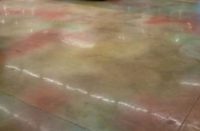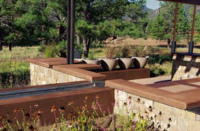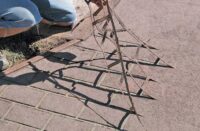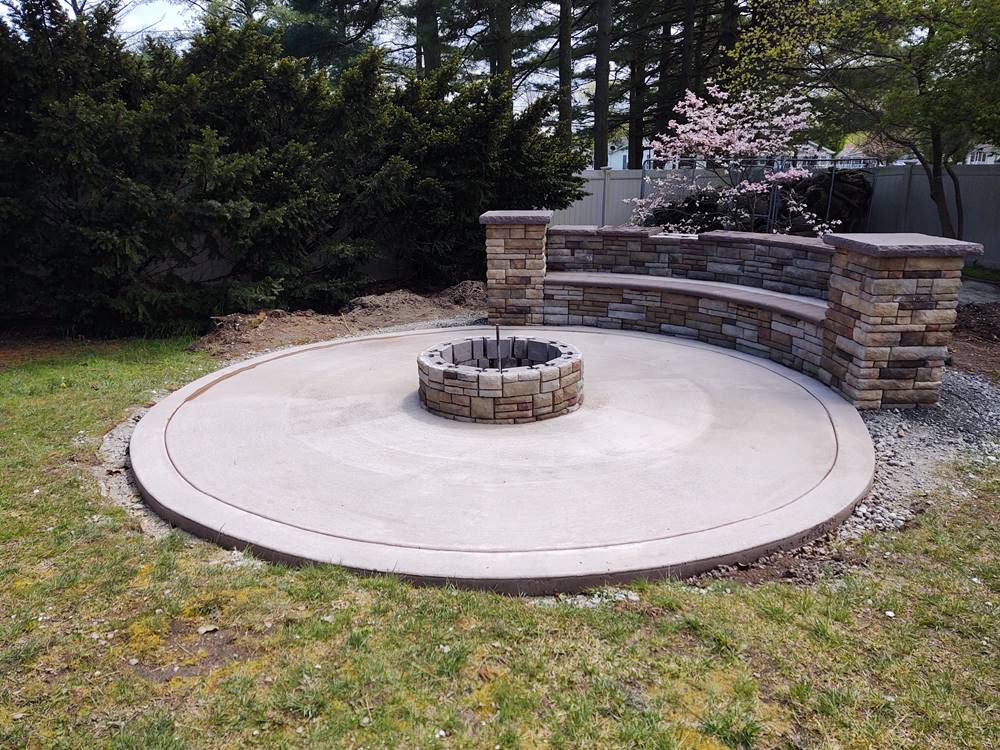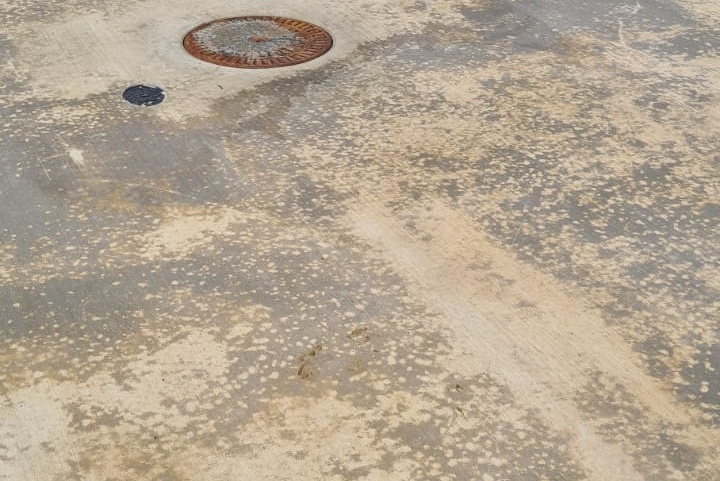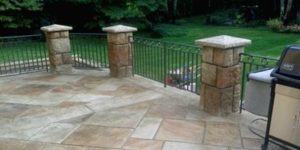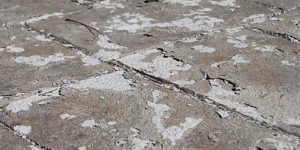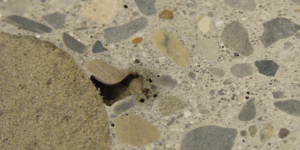Unfortunately, complaints about how color turns out are an all-too-familiar topic of conversation. Complaints can involve integrally colored concrete, color-hardened concrete, stamped and textured concrete and stained concrete. People claim the wrong color, inconsistent color, blotchy color, color that is too light, color that’s too dark, and the list goes on and on. When you really think about it, it does make sense. What is the biggest difference that separates decorative concrete from regular concrete? Color!
I have often found that with a gray sidewalk, patio or driveway, you can have multiple tones of gray, discoloration and blotchiness and no one takes a second glance. Add a small amount of color to the very same pour, and even the smallest color differences have ended up in a courtroom at a cost of thousands of dollars.
So, with the understanding that surface color issues will occur no matter how well a job is planned and or executed, let’s look at some popular and successful remedies for correcting these color problems.
Without fail, the call comes at the worst possible time. “The color is wrong,” states the voice on the other end, with the confidence and understanding that color in concrete is a sure thing, just like paint from a can. After researching the complaint, something, somewhere along the line went haywire. The concrete is structurally sound, but indeed the color in some fashion is wrong. The customer can’t or won’t live with it., So what are you going to do about it?
A word of caution
STOP! Before we go any further, let me interject. At this time in our little make-believe scenario, salvaging the job and making money or losing money hangs in the balance. If you discussed with your clients in advance (and put in writing) the possibility of color variation and how it can occur due to the natural variations of raw materials found in concrete, you are way ahead of the game. This is called managing expectations, and if you have read any of my previous columns you know I am a huge advocate.
If you did not discuss these possibilities, experience has shown you are in a bad place and chances are that you are going to end up getting stuck with some or all of the repair bill. No matter how you manage your customer’s expectations, stay calm and communicate that this can be fixed. And remember, don’t ever say, “I have never seen this before.” That statement does not instill confidence in your ability to resolve the issue.
When dealing with surface color issues, a few key issues determine the type of repair.
What is the final look you are after? For example, the solid-color look of integrally colored concrete or the natural-stone look of stamped concrete?
How big is the repair — small random spots or a thousand square feet of continuous slab?
What type of performance is expected? No repair is as good as the original. What type of maintenance is acceptable?
The following is an overview of some of the most common concrete surface color problems and successful repair products and systems for surface color issues that I have worked with over the last 15 years.
Translucent penetrating stains
This family of stains produces a color tone that ranges from a very light color wash to semiopaque. These types of stains work best on less severe surface color issues (minor blotchiness, minor discoloration and minor surface contamination) where significant hide from the underlying color is not required. They also work well where the desired outcome is some level of marbling or variegation. The most common of these products are acid stains, water- and alcohol-based acrylic stains and dyes. The biggest limitation is their need to penetrate, which means the surface being repaired needs to be free of all sealers and coatings.
Solid-color penetrating stains
Unlike their translucent cousins, solid-color stains provide 100 percent hide and are opaque. They are the best fix for more severe color issues where the requirement is both full coverage and hide. The most common of these problems include discoloration from curing blankets, faded or severely washed-out color, and batch-to-batch color inconsistency. Once again, the biggest limitation is their need to penetrate. This means the surface being repaired needs to be free of all sealers and coatings.
Tinted or colored sealers
This method of coloring concrete differs from stains in that a film or membrane contains the color. They can range from very translucent to opaque. The use of colored sealers is common for repairs where a sealer already exists. This eliminates the ability to use penetrating stains. Depending on the product used, they can be applied almost immediately after the concrete is placed. They also tend to have a lower price point compared to other repair products.
Highlighting tints and washes
These products are specifically for repair of stamped or textured concrete. They all work on the same principle. A nonreactive colorant is suspended in a liquid carrier — most often water. When applied to textured or stamped concrete, the “colored water” seeks the low areas of the surface, concentrating color in those areas. The carrier (water) evaporates, leaving the color behind. These color washes have no bond to the concrete and require a sealer to lock them into place. Their biggest limitation is lack of depth of color. They are designed to change or further accent highlights, not change the overall color of the concrete. Overapplication can result in excess color acting as a bond breaker when applying the sealer.
Toppings
When a stain or sealer with color will not work, the nuclear option is a topping. When the color or surface are so bad that it calls for a new concrete surface, microtoppings are the option of last resort. We use these thin polymer-modified coatings typically when the concrete has damage or contamination to a point where stains or colored sealers will not work. Graffiti, construction paint, oil and grease are the most common of these contaminants. The biggest limitation would the amount of preparation required prior to application. This is because the surface needs to have a certain profile for proper adhesion. They also tend to be expensive when comparing them to the other options.
It’s never good when problems occur, but with these repair options, you now have the ability to solve the problem, satisfy the customer and save your paycheck.
Questions from Readers
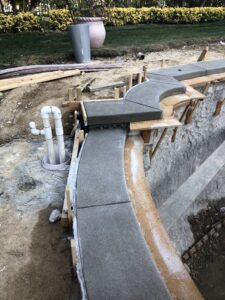 Question
Question
I wanted a very light-colored concrete pool coping. I gave the contractor various photos and a sample of light-colored limestone. The reason we didn’t use limestone was because they told me that with the shape of the pool there would be too many cut lines. I asked for a sample of concrete to approve before pouring but wasn’t given one.
The contractor ended up pouring the concrete and put lines in it every 2 feet. I hate how it looks. It’s too dark, too thick and I don’t want the lines. I have lost faith in our contractor. He has lied to us about multiple things on our project. Now they are telling me that it will lighten, but I don’t believe them. Is there any way to fix this? Or do they need to rip it out and start over? The poured concrete is now 2 days old.
Answer from Concrete Decor
I’m sorry to hear that your pool project is causing you stress. Unfortunately, some people don’t know how to care for and acknowledge another person’s feelings whether they’re a pool contractor or not.
For starters, please tell your contractor NOT to apply any sealer to the coping they have installed. I have some ideas for you but it’s important for the contractor to leave the coping uncoated with anything.
The contractor is correct in telling you that the concrete will lighten over time. If it was only installed a few days ago then it’s still wet internally. It needs 28 days to fully cure.
There is also the option of an overlayment that can give you the look and feel of limestone. However, you must think about slip resistance when considering options that’ll make your concrete look like another building material. With this option, you can also fill some of the control joints that your contractor installed.
Regarding your concern with control joints, good contractors typically add more control joints to a concrete project in place of fewer joints because concrete does crack. It’s not a matter of if concrete will crack but when. That being said, the contractor is making more work for himself by adding joints, but he may also be thinking about your long-term satisfaction with the project, believe it or not. It’s possible he’s just not communicating that to you in the best way.
Question
We chose a desert tan color for our patio. The day it was poured the color was closely matched, but the next day changed to pink and opaque. How can we fix this problem before sealing?
Answer from Concrete Decor
There is a product for that type of problem. However, it is very important that your surface is not sealed yet. Cem-Tint can only be used on unsealed concrete.
The product comes in many colors and if the color you’re looking for isn’t shown, custom tints are also available.
Question
We had concrete laid two months ago and it is completely blotchy with dark gray and yellow colors and spotty throughout. Do you have any idea what could have caused this?
Answer from Concrete Decor
It sounds like your contractor isn’t really aware of what’s wrong. Also, the contractor is responsible for telling the ready-mix company what kind of mix design they want for each and every concrete placement they do. It appears your concrete was integrally colored. Is that correct? If so, the manner in which that concrete is finished will determine its success in matching the color chart you used to select a color for your patio. Adding water to the surface during finishing of concrete is never okay.
The American Concrete Institute (ACI) has no specifications that tell an installer that it’s okay. Excessive water in the mix or sprayed onto the surface of the concrete to extend working time weakens the slab, displaces color at the surface and may even result in spalling of the surface during wintertime freeze/thaw cycles.
Once you get the issues resolved with discoloration, get a “penetrating” (water-based or solvent-based) sealer applied to the patio. This will ensure that moisture intrusion is kept to a minimum during the rainy season.
